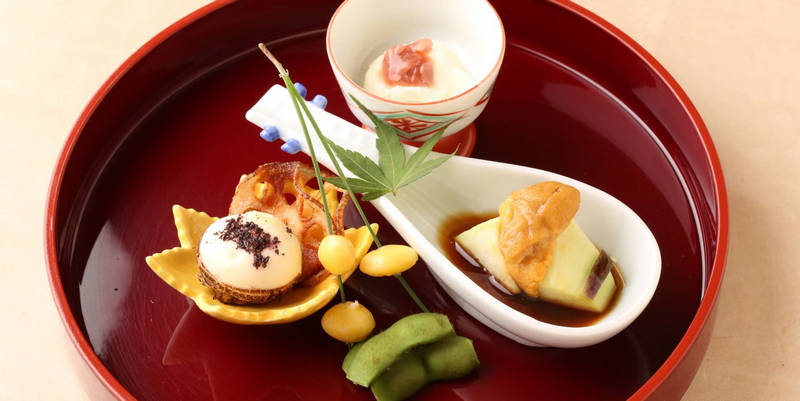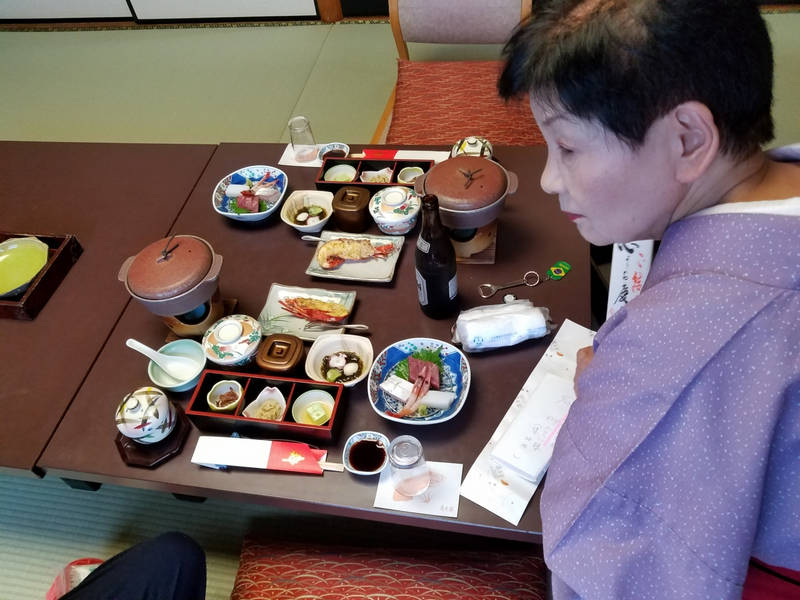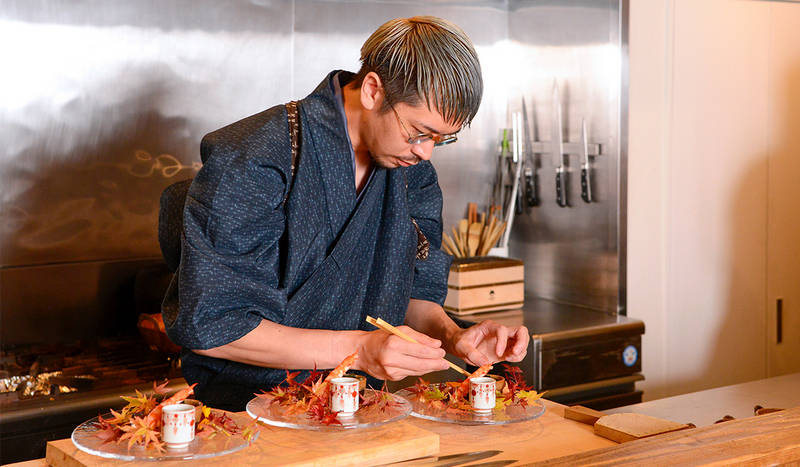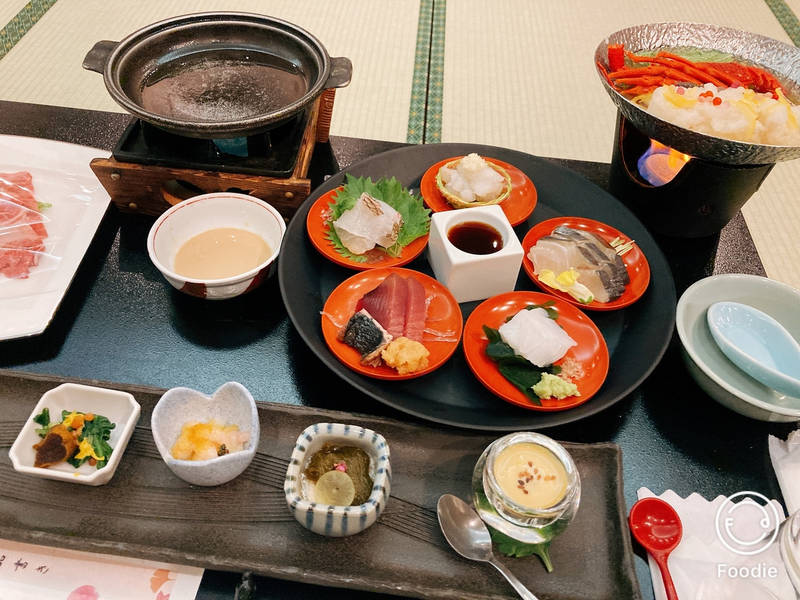Kaiseki cuisine
Kaiseki cuisine (会席料理, kaiseki ryori) is a form of traditional Japanese multi-course meal, which according to many represents the highest and most refined expression of all Japanese cuisine. Often served for dinner in the most luxurious ryokans, travelers who have been lucky enough to try it have memorable memories forever.
All the details about kaiseki cuisine
The origins of kaiseki cuisine are very blurred over time and date back to several centuries ago. What today is most often meant by kaiseki style is a mix of centuries-old culture traditions, and in particular of the imperial court cuisine, the cuisine of Buddhist temples, the cuisine of the warrior families of the samurai, and, last but not least , of the accompanying food for the tea ceremony, the latter dating back to 1500. According to many, it is the kitchen of the tea ceremony that is the true progenitor of the modern kaiseki style, while everything else would have an influence yes, but less relevant. In fact, in Japanese there are two different terms, both pronounced "kaiseki" but which use different kanji (懐石 and 会席) and indicate two types of cuisine that are slightly different in the quantity and order in which the dishes are served. Not even the Japanese often know how to explain the difference between these two kaiseki kitchens.
Without going into too much detail, the dishes are generally prepared using common techniques of Japanese cuisine. However, kaiseki cuisine cannot be summed up in this or that dish, it is more a philosophy that guides the composition of the dishes by the chefs. They have a certain freedom to choose the ingredients and compositions, trying to highlight, in addition to their personal style, the delicacies of the region where they are and of the season. The philosophy of kaiseki cuisine can in fact be summarized in a few simple principles: 1) use fresh and seasonal ingredients, 2) use very simple condiments to bring out all the taste of the main ingredients, and 3) present everything with extreme care and elegance.
A typical kaiseki-style lunch or dinner involves many dishes served in small portions, even up to 15 different dishes. The meal generally begins with
shokuzen-shu, a small glass of local alcohol. After this, more appetizers generally arrive, at least a plate of sashimi (
mukōzuke), as well as one or more main dishes based on meat or fish and with the addition of vegetables, cooked with different cooking techniques. You could be served a boiled course, a grilled one, a slow cooked one, a steamed one, or one cooked directly at the table in a hot pot, or fried in tempura. Depending on the menu you have chosen, all or almost all of these types of dishes could also be served. In many cases, the typical Japanese shokuji set is also served (sometimes at the beginning, sometimes at the end of the meal before dessert), consisting of a bowl of rice, a bowl of miso soup and a small plate of pickles (tsukemono). Dinner generally ends with
mizugashi, a sweet dish that could be ice cream, sorbet, or seasonal fruit.
 a composition of sweets and fruit served as mizugashi at the end of a kaiseki dinner
a composition of sweets and fruit served as mizugashi at the end of a kaiseki dinner
In addition to the taste of the dishes, what strikes the visitor from abroad for the first time in front of this type of cuisine is the beauty of the dishes. The appearance is taken care of in every detail, from the arrangement of the food on the plate, to the arrangement of the dishes on the table. It is truly a sight to just look at the dishes on the table. Not surprisingly, it is good practice, before starting to eat, to take a few seconds to admire and appreciate the presentation prepared by the chef and the scent of the food.
Where to eat kaiseki style in Japan
The number one place for a visitor from abroad to try a kaiseki-style dinner is a
ryokan. Usually, the magic of the ryokan, and perhaps even of the adjoining spas, combined with the magic of kaiseki-style food leaves the typical foreign tourist with indelible and magical memories that he will never be able to get rid of, which will make him want to return to Japan as soon as possible once he or she returns home. Many ryokans offer half-board packages, which include a
traditional style breakfast and a kaiseki style dinner. Full board, on the other hand, is not very common. The ryokans are also one of the paradoxically cheapest places to try kaiseki cuisine, starting from 10-15 thousand yen per person including the room and the meals.
 a course of kaiseki cuisine in a ryokan
a course of kaiseki cuisine in a ryokan
Another place to try kaiseki cuisine are small restaurants, known as
ryōtei (料亭). For a dinner in these restaurants, be prepared to spend from a minimum of 5,000 yen each to 30 or 40,000 yen for the most luxurious restaurants. You can find these restaurants in all major cities of Japan. Of all the cities, Kyoto is the most famous for kaiseki cuisine restaurants, either because for many centuries it was the home of the imperial court and the nobility, or because, much more trivially, tourists visiting Kyoto are more likely to look for this type of experience related to tradition.
On this site you can book and buy online a lunch or dinner at
Honke Tankuma Honten, a Michelin starred restaurant with kaiseki cuisine in the center of Kyoto
 a chef at work
a chef at work
Guided tours, activities and other things to do
If you are planning a trip to Japan and you want to do something more than just visiting famous places and monuments, we suggest you to use
Rakuten Travel Experiences.
How to use Rakuten Travel Experiences
Rakuten Travel is a very useful website to
enrich your travel experience, especially if you are going solo or it's your first time in Japan.
Because of the language barrier (and more), in Japan it is very difficult to interact with the locals and to get off the tourist track.
Thanks to Rakuten Travel you can find a lot of interesting and sometimes unique
guided tours and activities all over Japan (and not only in Japan), that you would otherwise never be able to enjoy.
But there's more: on Rakuten Travel you can also
buy tickets for several famous attractions, events, transportation and other useful services for tourists. Last but not least, you can
reserve a table in hundreds of restaurants.
Some examples
Take a look at Rakuten Travel Experiences
You may also be interested in
 (credits)
(credits)